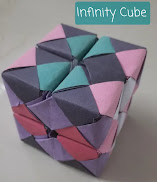The Story of Sadako Sasaki
Sadako Sasaki was a Japanese girl who became a victim of the atomic bombings of Hiroshima and Nagasaki during World War II. She was only two years old when the bombs were dropped. She is remembered through the story of the more than one thousand origami cranes she folded before her death. She died, at the age of 12, on October 25, 1955, at the Hiroshima Red Cross Hospital.
On the fateful day of the bombing of Hiroshima, Sadako was at home, about 1.6 km away from ground zero. She was blown out the window and her mother ran out to find her, suspecting she may be dead. Instead, she found her alive with no apparent injuries. While they were fleeing, Sadako and her mother were caught in black rain. Her grandmother ran back inside and died near the house, apparently trying to escape fires by hiding in a cistern.
Sadako grew up like her peers, becoming an important class relay race team member. In November 1954, Sadako developed swellings on her neck and behind her ears. In January 1955, purpura had formed on her legs. Subsequently, she was diagnosed with acute malignant lymph gland leukemia. She was hospitalized on February 21, 1955, and given no more than a year to live. She was admitted as a patient to the Hiroshima Red Cross Hospital for treatment and given blood transfusions on February 21, 1955. When she was admitted, her white blood cell count was six times higher than the average child's.
In August 1955, she was moved into a room with a girl named Kiyo, a junior high school student who was 2 years older than her. Shortly after, beautiful origami cranes were brought to her home from a local high school club. Chizuke Hamamoto, Sasaki's friend, narrated the legend of the origami cranes to her. Determined, she set a goal that she would fold 1,000 of them, which was believed to grant the folder a wish. Although she had plenty of free time during her days in the hospital, Sasaki lacked paper, so she used medicine wrappings and whatever else she could scrounge; including going to other patients' rooms to ask for the paper from their get-well presents. Her best friend, Chizuko, also brought paper from school for Sasaki to use.
A popular version of the story is that Sasaki fell short of her goal of folding 1,000 cranes, having folded only 644 before her death, and that her friends completed the 1,000 and buried them all with her. (This comes from the novelized version of her life, Sadako and the Thousand Paper Cranes.) However, an exhibit that appeared in the Hiroshima Peace Memorial Museum stated that by the end of August 1955, Sasaki had achieved her goal and continued to fold 300 more cranes. Sadako's older brother, Masahiro Sasaki, says in his book The Complete Story of Sadako Sasaki that she exceeded her goal.
Sadako Sasaki has become an international symbol of peace and a peaceful world. Sasaki is a heroine for many Japanese girls. Japanese children fold the classic, yet intriguing origami crane in memory of Sadako. Dedicated to Sasaki, people all over Japan celebrate the 6th of August as the Annual Peace Day.
 Statue of Sadako Sasaki
Statue of Sadako Sasaki in Peace Park, Seattle, Washington
 In this one-vertex crease pattern, the number of mountain folds( the 5 folds with colored side out) differs by 2 from the number of valley folds(the 3 folds with white side out).
In this one-vertex crease pattern, the number of mountain folds( the 5 folds with colored side out) differs by 2 from the number of valley folds(the 3 folds with white side out). In this example, the alternating sum of angles( clockwise from the bottom) is 90°- 45° + 22.5° - 22.5° + 45° - 90° + 22.5° - 22.5°= 0° . Since it sums up to 0, the crease pattern is flatly foldable.
In this example, the alternating sum of angles( clockwise from the bottom) is 90°- 45° + 22.5° - 22.5° + 45° - 90° + 22.5° - 22.5°= 0° . Since it sums up to 0, the crease pattern is flatly foldable.



































